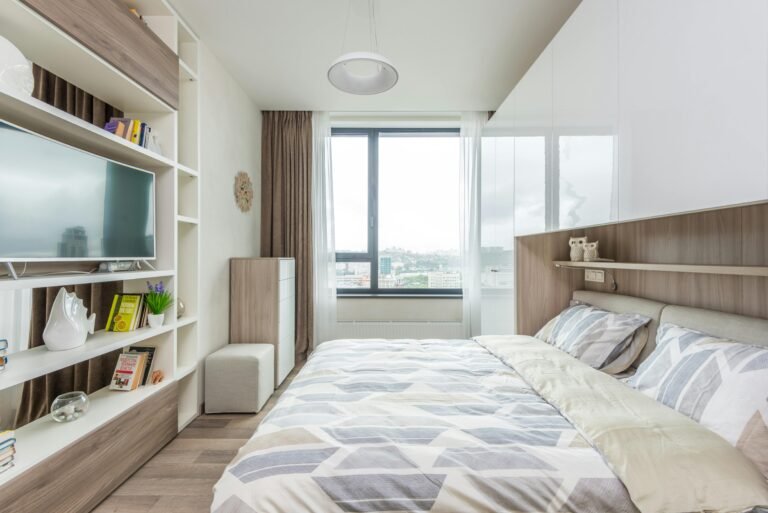Upgrade your home’s insulation today to save energy and live more comfortably, as shown by research from the US Department of Energy.
Is your home struggling to maintain a comfortable temperature? Are your energy bills higher than you like? Proper insulation can be the solution. This guide explains why insulation is important, shows you different options, and teaches you how to install it effectively.
Why Insulation Matters: The Big Picture
Insulation boosts your home’s comfort and efficiency:
- Energy Savings: Proper insulation cuts heating and cooling costs. Many homeowners see up to 50% savings on energy bills.
- Comfort Boost: Good insulation keeps your home at a steady temperature and stops drafts.
- Noise Reduction: Insulation reduces sound, helping create a quiet space.
- Environmental Impact: Using less energy lowers your home’s carbon footprint.
- Moisture Control: With good ventilation, insulation helps manage moisture. This reduces mold and structural damage risk.
Note: The benefits vary by climate, your home’s current insulation, and the changes you make.
Understanding Insulation: The Science Behind the Cozy
Learn these key points to make smart insulation choices:
- R-Value: This number shows how well insulation stops heat flow. A higher number means better insulation.
- Heat Transfer: Insulation slows heat movement between different temperature areas.
- Air Sealing: Good insulation needs proper air sealing to stop heat from escaping through gaps.
Insulation Materials: Comparing Your Options
Here is a simple look at common insulation types:
- Fiberglass
- R-value per inch: 2.2 – 2.7
- Pros: Affordable and easy to find
- Cons: May irritate skin and lungs during installation
- Cellulose
- R-value per inch: 3.2 – 3.8
- Pros: Eco-friendly and good with sound
- Cons: Can settle over time
- Spray Foam
- R-value per inch: 3.6 – 6.5 (varies by type)
- Pros: Offers great air sealing with a high R-value
- Cons: Costs more and needs professional help
- Mineral Wool (Rockwool)
- R-value per inch: 3.0 – 3.3
- Pros: Fire-resistant and reduces sound
- Cons: More expensive than fiberglass
- Rigid Foam
- R-value per inch: 3.6 – 6.5 (varies by type)
- Pros: Provides high R-value, resists moisture
- Cons: Costs more and needs careful installation
- Reflective/Radiant Barrier
- Works by reflecting radiant heat
- Best for: Attics in hot climates
Note: R-values can be slightly different for products. Always check the product details.
Key Areas to Insulate
Focus on these critical areas to boost your home’s energy efficiency:
- Attic
- Target R-value: R-38 to R-60, based on your climate
- Tip: Ensure proper ventilation to stop moisture buildup.
- Walls
- Target R-value: R-13 to R-23 for 2×4 walls; R-19 to R-28 for 2×6 walls
- Tip: Use blown-in insulation for older walls
- Floors
- Target R-value: R-25 to R-30 over unheated spaces
- Tip: Insulate rim joists too
- Basement
- Target R-value: R-10 to R-19 for basement walls
- Tip: Fix moisture problems before insulating
- Crawl Spaces
- Target R-value: R-13 to R-19 for conditioned walls
- Tip: Use encapsulation to control moisture
- Doors and Windows
- Tip: Use weatherstripping and caulk; consider energy-efficient windows
Note: R-values depend on your climate zone. Check local building codes or ask an energy expert for advice.
Installation Techniques: DIY or Pro?
Your choice between DIY and professional installation hinges on your comfort level and the work involved. Consider these tips:
- Batt insulation works for many DIY projects in attics.
- You can use rented equipment for blown-in insulation, though it is challenging.
- Spray foam requires professional installation.
- Rigid foam can be a DIY task for simple jobs, but proper air sealing is key.
Always choose safety first and consult a professional if you feel unsure about any step.
Pro Tips for Insulation Success
- Seal gaps before adding insulation to boost performance.
- Do not compress insulation. It works best when loose.
- In attics, use layered insulation to cover joists and reduce heat loss.
- Place vapor barriers correctly in humid climates to avoid moisture problems.
- Keep attics and crawl spaces well ventilated.
- Insulate water pipes and HVAC ducts in unheated areas.
Conclusion
Good insulation improves your home’s energy efficiency, comfort, and value. Although the cost may seem high at first, the savings and comfort it brings are well worth the investment.
Your home is unique. Ask an energy auditor or insulation expert to help plan the best solution for your needs and climate.
Ready to wrap your home in a cozy blanket of efficiency? Check these top-rated insulation options to begin your project:
Learn more about insulation products
As an Amazon Associate, I earn from qualifying purchases.
Frequently Asked Questions
How do I know if my home needs more insulation?
If your energy bills are high or you feel cold air near windows and doors, you might need better insulation.
What insulation material is best for my home?
The best material depends on your climate, budget, and installation type. Consult an expert for personalized advice.
Can I install insulation by myself?
Some insulation types allow DIY installation. However, for complex projects or spray foam, hiring a professional is recommended.
Explore this topic: Home Decor
Last updated on August 7, 2025








